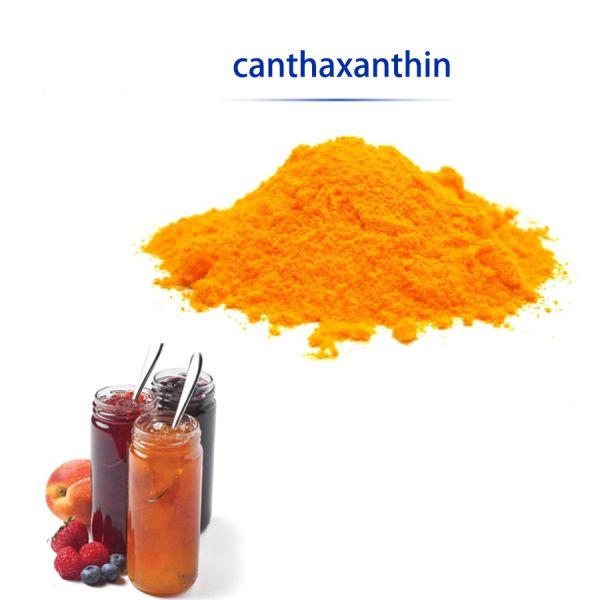Canthaxanthin is a carotenoid pigment, which is orange. It occurs naturally in a variety of foods and can also be synthesized. Mostly used as animal feed additives to make the color of egg yolk and poultry more vivid. It is mainly used as an orange colorant when added to food, but it is rarely used. Some studies have shown that large amounts of canthaxanthin may cause it to accumulate in the retina, but a 2010 assessment by the European Food Safety Authority showed that canthaxanthin is generally safe to use.
Canthaxanthin is a natural pigment with great potential antioxidants. It has the ability to quench active oxygen and scavenge free radicals. Its ability to quench active oxygen and scavenge free radicals is second only to astaxanthin and is β-carrot. It is nearly twice as much as vitamin E, and 50 times as much as vitamin E. It is also called super vitamin E. In 1984, FDA/WHO approved the chemical book Canthaxanthin to be included in food additives and set quality standards. Canthaxanthin has been widely used as a coloring agent, nutrient and antioxidant to be added to food, feed and cosmetics. Natural canthaxanthin exists in some mushrooms, crustaceans, fish, algae, eggs, blood and liver, and its content is extremely small. In addition, some microorganisms can also produce canthaxanthin.
Anticancer effect: Experiments on oral cancer in rats proved that canthaxanthin has a significant inhibitory effect on tumor proliferation and can significantly reduce the incidence of cancer. Supplementation of canthaxanthin can reduce the incidence of breast tumors by 65%, and canthaxanthin can also reduce the carcinogenicity of methylnitrosourea. The number and volume of breast cancer cells induced by nitrosourea have a good effect. In addition, feeding canthaxanthin can also significantly inhibit the occurrence of thymoma, melanoma, and fibrosarcoma. The strength of this inhibition is directly related to the feeding dose, feeding time and sex of the experimental mice.
Anti-oxidation: Canthaxanthin is an excellent photoprotectant and antioxidant. A large number of clinical trials have shown that the combination of canthaxanthin and β-carotene is much better than β-carotene alone in treating patients with hematopoietic protoporphyrin (EPP) and compound light disease (PMLE). The intake of canthaxanthin can enhance the activity of glutathione peroxidase, catalase, superoxide dismutase, etc., and efficiently regulate the balance of the oxidative-antioxidant system in the organism, thereby inhibiting cholesterol-induced oxidative stress. Improving immunity Canthaxanthin has immunomodulatory activity and can be used as an immunomodulating compound in the human body. Canthaxanthin improves the body’s immunity by improving the phagocytic capacity of macrophages, promoting lymphocyte transformation, increasing the number of lymphocytes, and enhancing the vitality of natural killer cells.
Improve immunity: Canthaxanthin has immunomodulatory activity and can be used as an immunomodulatory compound in the human body. Canthaxanthin improves the body’s immunity by improving the phagocytic capacity of macrophages, promoting lymphocyte transformation, increasing the number of lymphocytes, and enhancing the vitality of natural killer cells.
Protect skin health: Excessive exposure of unprotected skin to sunlight can cause sunburn, which can cause light-induced oxidation, inflammation, immunosuppression, aging, and even cancer of skin cells. Preclinical studies have shown that typical dietary antioxidants can alleviate these injuries. Canthaxanthin has a good effect on congenital photodermatosis, especially for the treatment of polymorphic solar eruption. It also prevents light-induced skin cancer and ultraviolet-induced immunosuppression.
Post time: Jun-12-2020
